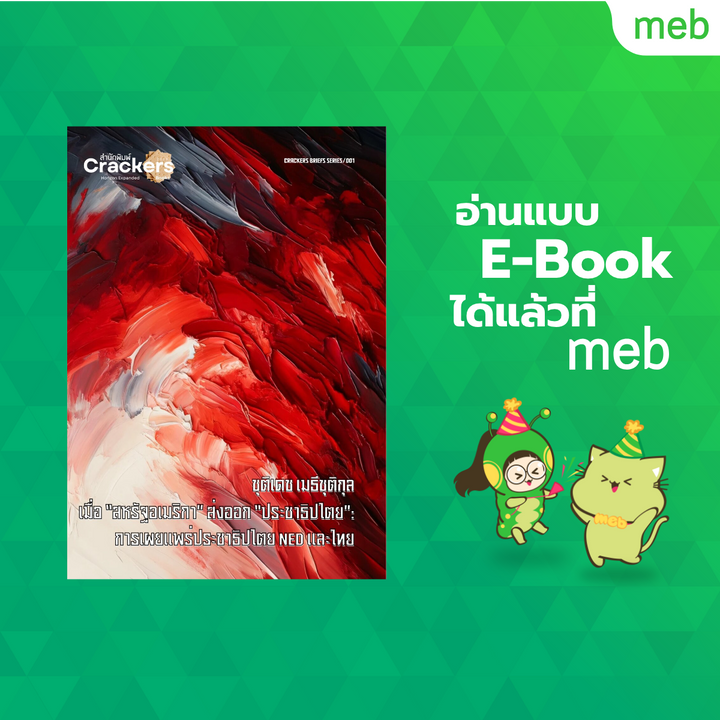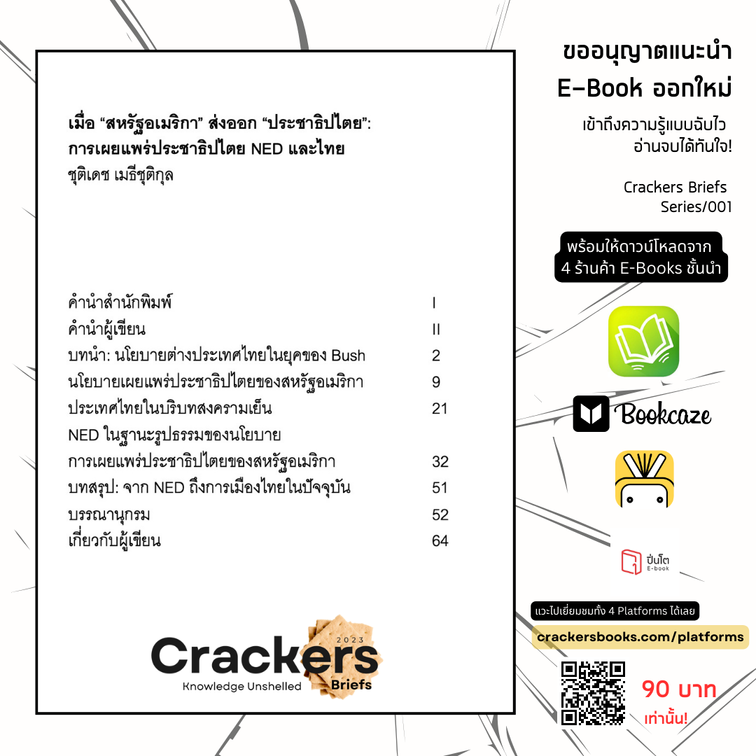
Published by Crackers Books,
5 July 2024
https://crackersbooks.com/papercrunch
Research Paper Crunch\\
Analyzing "Thailand's China Policy, 2014–2019: Hedging Against China?"
Bunyavejchewin, P., & Buddharaksa, W. (2024). Thailand's China policy, 2014–2019: Hedging against China? Heliyon, 10, e33366. https://doi.org/10.1016/j.heliyon.2024.e33366
Introduction
The paper "Thailand's China Policy, 2014–2019: Hedging Against China?" by Poowin Bunyavejchewin and Watcharabon Buddharaksa provides an insightful analysis of Thailand’s foreign policy towards China under the National Council for Peace and Order (NCPO) led by General Prayut Chan-o-cha. This research challenges the prevailing notion that Thailand completely bandwagoned with China and instead posits that Thailand adopted a hedging strategy.
Strengths of the Paper
- Comprehensive Framework: The use of Kuik’s hedging theory provides a robust analytical framework. This theory is well-grounded and widely accepted in international relations, making the analysis both credible and theoretically sound.
- Empirical Evidence: The authors draw on a range of primary and secondary sources, including archives from the Ministry of Foreign Affairs in Thailand and scholarly publications. This extensive use of empirical data strengthens the study’s findings.
- Nuanced Analysis: The paper effectively challenges simplistic dichotomies of balancing and bandwagoning by illustrating the complexity of Thailand’s foreign policy maneuvers. It highlights how Thailand simultaneously employed return-maximizing and risk-contingency strategies.
- Contextual Insight: The study places Thailand’s foreign policy within the broader context of domestic politics and regime legitimation, providing a deeper understanding of the motivations behind policy decisions.
Weaknesses of the Paper
- Limited Scope: The analysis is confined to the period of 2014–2019 and the NCPO government. While this focus is deliberate, it limits the generalizability of the findings to other periods or regimes in Thai politics.
- Reliance on Non-Probability Sampling: The use of non-probability sampling for selecting instances of Thailand’s China policy may introduce bias. Although the authors justify this approach, it still raises questions about the representativeness of the selected cases.
- Potential Overemphasis on Domestic Factors: While the focus on regime legitimation is insightful, it might overshadow other significant international factors influencing Thailand’s foreign policy, such as regional security dynamics and economic considerations.
Lessons Learned
- Complexity of Foreign Policy: The study underscores the complexity of foreign policy decisions in smaller states, which often navigate between major powers using sophisticated strategies rather than straightforward alignments.
- Importance of Regime Legitimation: Domestic political stability and regime legitimacy are crucial factors shaping foreign policy. Leaders are often driven by the need to maintain internal cohesion and support, influencing their international strategies.
- Value of Hedging: Hedging emerges as a valuable strategy for smaller states to balance relations with multiple major powers. It allows for flexibility and the pursuit of national interests without full commitment to any single power.
Conclusion
The paper by Bunyavejchewin and Buddharaksa offers a nuanced and well-supported analysis of Thailand's China policy under the NCPO. By employing Kuik’s hedging theory, the authors provide a compelling argument against the notion of complete bandwagoning with China. Instead, they demonstrate how Thailand’s foreign policy was a balanced act of maximizing returns and mitigating risks. This study is a valuable contribution to the literature on international relations and foreign policy analysis, particularly for scholars interested in the dynamics of Southeast Asian geopolitics.
ราคา 150 บาท
สั่งซื้อได้ที่ Shopee
ติดต่อโฆษณาได้ที่ อีเมล์ crackersbooks2023@gmail.com






